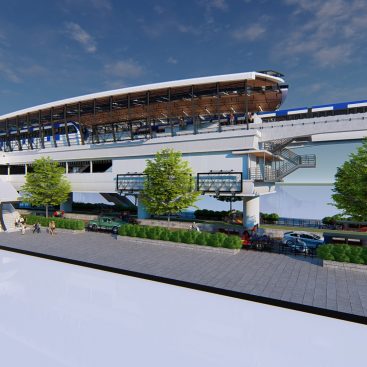The Laguna Gateway Inland Container Terminal (LGICT/ICX) is an inland container depot located in Calamba, Laguna that has been projected to handle the increasing demand of operations in the Manila International Container Terminal (MICT), providing a regional logistics hub in the provinces of Laguna, Batangas, Rizal, Aurora, and Quezon. Currently, ICX is operating and able to receive laden containers from MICT. However, transport between terminals is done via traditional trucking.
MRail Incorporated (MRAIL) signed an agreement with the International Container Terminal Services (ICTSI) for the movement of cargo/containers between MICT and ICX by rail transport by reopening the freight line between these two terminals. To achieve this objective, MRAIL needs to reconstruct/rehabilitate certain segments of the alignment, acquire, operate and maintain freight trains, lease land for its depot/maintenance facilities, and coordinate with Philippine National Railways (PNR) for the use of its right‐of‐way (ROW) and facilities.
In line with this, SYSTRA Philippines (SYSTRA) has been engaged by MRAIL Inc. to prepare a preliminary study for the rehabilitation/reconstruction of said freight service with the following tasks:
- Assessment of the proposed ROW between North Harbor, Manila and Calamba, Laguna;
- Validation of all existing projects under construction, approved, or in the planning stage impacting PNR ROW;
- Gathering of preliminary geotechnical and hydrological data along the alignment;
- Preliminary alignment design of the freight line considering
- the projected container freight demand;
- Preparation of initial structural design in accordance with
- relevant design standards;
- Preparation of preliminary electro‐mechanical design for all
- major systems such as, but not limited to, signaling, communications, and road crossing barriers, among others;
- Preparation a comprehensive capital expenditure (CAPEX) of the proposed project; and,
- Development of initial maintenance model for tracks, signaling and communication.
These works were carried out from April to December 2015.












